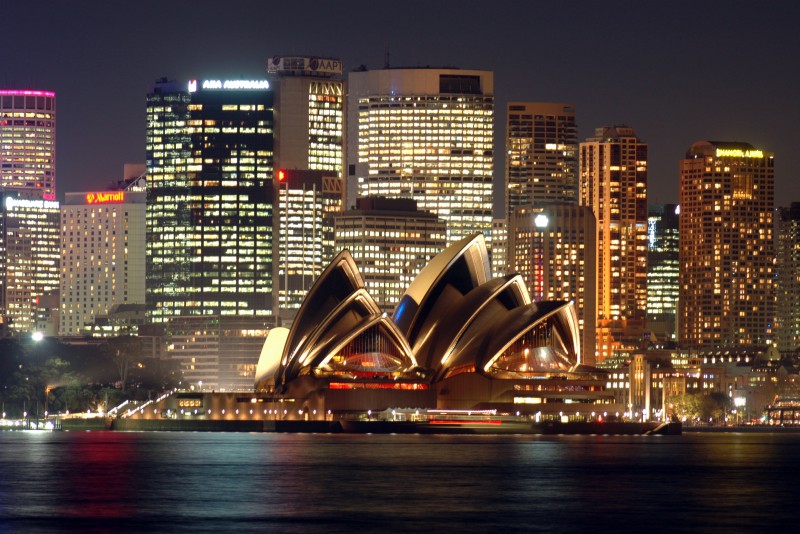
Sydney is the state capital of New South Wales and the most populous city in Australia. It is on Australia’s south-east coast, on the Tasman Sea. In June 2010 the greater metropolitan area had an approximate population of 4.76 million people. Inhabitants of Sydney are called Sydneysiders, comprising a cosmopolitan and international population.
The site of the first British colony in Australia, Sydney was established in 1788 at Sydney Cove by Captain Arthur Phillip, of the First Fleet, as a penal colony. The city is built on hills surrounding one of the world’s largest natural harbours, Port Jackson, which is commonly known as Sydney Harbour, where the iconic Sydney Opera House and the Harbour Bridge are prominent structures. The hinterland of the metropolitan area is surrounded by national parks, and the coastal regions feature many bays, rivers, inlets and beaches, including the famous Bondi and Manly beaches. Within the city are many parklands, including Hyde Park and the Royal Botanic Gardens.
Sydney has hosted multiple major international sporting events, including the 1938 British Empire Games (now known as the Commonwealth Games), the 2000 Summer Olympics and the final of the 2003 Rugby World Cup. The main airport serving Sydney is Sydney (Kingsford Smith) Airport and its main port is Port Botany.
Attractions
Sydney is well-endowed with open spaces and access to waterways, and has many natural areas botanic gardens and parks. Within the CBD are the Chinese Garden of Friendship, Hyde Park, The Domain and the Royal Botanic Gardens.
The metropolitan area also contains prominent parks and gardens, such as the Auburn Botanical Gardens, and national parks, including the Royal National Park, the second oldest national park in the world, Ku-ring-gai Chase National Park and several parks in Sydney’s far west which are part of the World Heritage listed Greater Blue Mountains Area.
The Domain was established by Governor Arthur Phillip, just six months after the arrival of the first fleet. Originally established as being exclusive to Governors, it was opened to the public in the 1830s. Hyde Park was dedicated on 13 October 1810 by Governor Macquarie for the “recreation and amusement of the inhabitants of the town and a field of exercises for the troops”. Hyde Park is named in honour of the original Hyde Park in London, England. Containing over 580 trees, it is located in the eastern section of the inner city district.
To celebrate the first 100 years of European settlement, Centennial Park was dedicated by Sir Henry Parkes in January 1888. It is the largest open space in the city, occupying 220 hectares. Similarly, Bicentennial Park was opened on 1 January 1988 to commemorate 200 years since European settlement. 1988’s Bicentennial celebrations also saw the opening of the Chinese Garden of Friendship, designed by the City of Sydney’s Chinese sister city Guangzhou.
